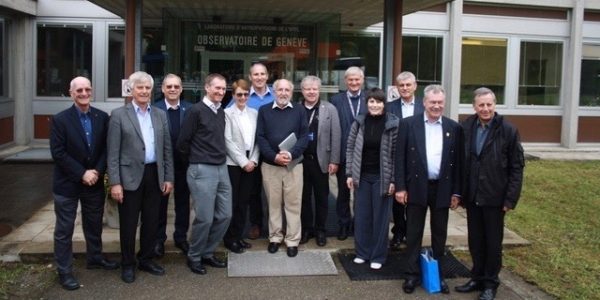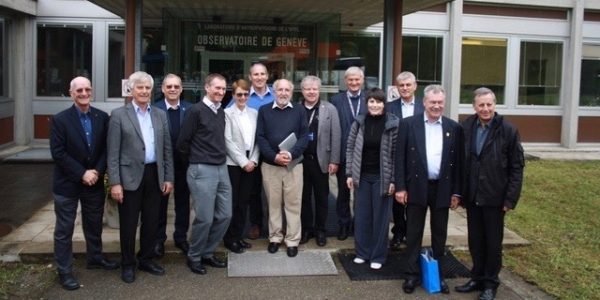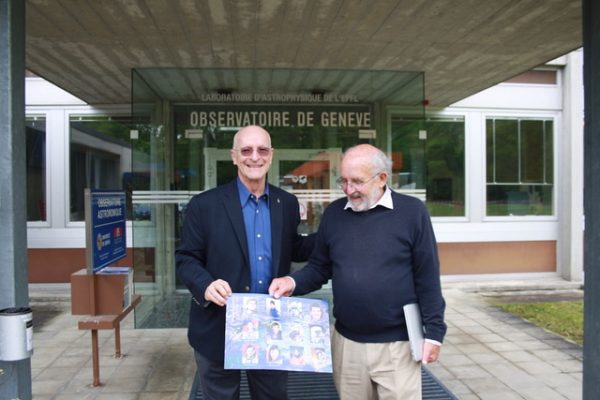Astronauts visit the Geneva Observatory


The European astronauts together with Professor Michel Mayor (middle). (Photo University of Geneva)
There are only 550 in the world who, having carried out at least one orbit around the Earth, have the right to wear the title of “astronaut”. The majority of them are Americans and Russians, only 49 are Europeans. Of these 49, twelve of them traveled to Geneva to visit the astronomical observatory of the University in the morning and the CERN in the afternoon. Among these members of the European Space Explorers Association, Claude Nicollier served a little bit as guide, as he studied astronomy in this observatory where he and his colleagues were received by Stéphane Udry, Michel Mayor , Francesco Pepe, all members of PlanetS, and Georges Meynet, a professor specialised in stellar evolution.
After a short welcome address given by Stéphane Udry, the twelve astronauts and their accompanying (spouses and families) were given a description of the activities of the observatory by Georges Meynet. “We see immediately that they are lively and well informed,” the professor said, “their questions are relevant and high-level, such as how we know if the amount of iron that is measured on the surface of a star is identical to that which is in the heart of the star “. The same observation was made by Michel Mayor, who gave a presentation on the search for exoplanets, followed by a very attentive audience. Then, according to a minute timed timetable visitors went to the clean room with Francesco Pepe. They were able to appreciate the work involved in the integration of an instrument such as ESPRESSO. It was a last chance visit, since ESPRESSO has to leave in Chile to be installed on the four VLTs at the beginning of August.

Swiss astronaut Claude Nicollier (left) and Professor Michel Mayor. (Photo University of Geneva)
Before their visit to the observatory, the astronauts had made a stopover the day before at the RTS premises where they were waiting for a hundred students who bombarded them with questions. . “We had to refuse many requests,” says Marco Cattaneo from UNIGE’s communications department. Among the stars of this star-studded visit was Helen Sharman, who flew aboard Soyuz in 1991. “At the time, I was the first non-Soviet and non-American woman to go into space,” said the former astronaut now aged 53, “on my return from space I became a celebrity, but at the time, I was not at all prepared for this sudden notoriety”. Over time, Helen Sharman has learned to master the public and the media. Smiling and feeling like she always has all the time, she gives the impression of being still up there, “being weightless is like floating in water, it’s the most relaxing thing I’ve ever done in my life.”
As for Claude Nicollier his speech is a little less relaxing! Taking advantage of his visit to Geneva with the Space Explorers Association, he warned decision makers of the possible impacts of asteroids on Earth. “It will not happen tomorrow, not ten years from now, but maybe in fifty or a hundred years: we have to be prepared,” considered the former astronaut, saying the likelihood of a destructive impact is 100 %.
Categories: External Newsletter
